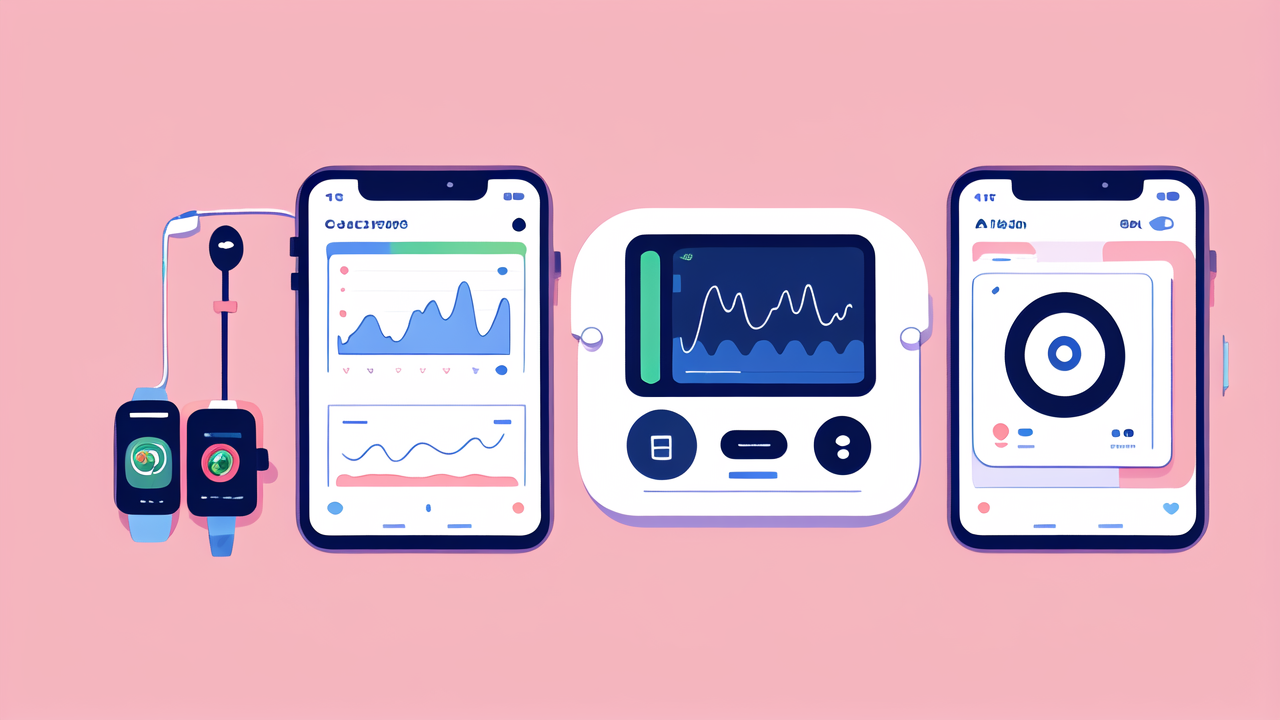Understanding Smart Watch Features and Their Impact on Health Metrics
The Evolution of Smart Watch Technology in the United States
Smart watches have come a long way since their inception. In the US, they've evolved from simple timekeepers to advanced health monitors. Early models focused on basic functions like step counting and heart rate tracking. Now, they offer a wide range of health metrics.

The journey began with fitness bands that counted steps. These paved the way for more complex devices. Today's smart watches can measure sleep quality, blood oxygen levels, and even detect falls. This rapid progress shows how quickly technology can advance to meet consumer needs.
US tech giants like Apple and Google have been at the forefront of this evolution. They've invested heavily in research and development. This has led to more accurate sensors and better data analysis. As a result, smart watches are now an integral part of many Americans' health routines.
Key Health-Related Features of Modern Smartwatches
Modern smartwatches are packed with health-related features. Here are some key ones:
- Heart rate monitoring
- ECG (electrocardiogram) capability
- Blood oxygen measurement
- Sleep tracking
- Stress level detection
- Menstrual cycle tracking
- Fitness activity tracking
These features use advanced sensors to collect data. They then use algorithms to interpret this data. This provides users with valuable insights into their health. For example, continuous heart rate monitoring can detect irregularities. This could potentially alert users to serious health issues.
Many watches also offer guided breathing exercises and meditation apps. These help users manage stress and improve mental health. Some even have built-in GPS for accurate tracking of outdoor activities.
The Science Behind Accurate Body Measurements
The accuracy of smart watch measurements relies on complex science and technology. Most watches use photoplethysmography (PPG) for heart rate monitoring. This involves shining light into the skin and measuring the reflection. Blood absorbs light differently based on its oxygen content. This allows the watch to estimate heart rate and blood oxygen levels.
For more advanced measurements like ECG, watches use electrical sensors. These detect the electrical signals from your heart. This can help identify irregularities in heart rhythm. Some watches also use bioimpedance sensors. These measure the resistance of body tissue to tiny electrical currents. This can be used to estimate body composition.
Accelerometers and gyroscopes track movement for step counting and sleep monitoring. GPS chips provide location data for outdoor activities. All these sensors work together to provide a comprehensive picture of your health.
Regulatory Landscape: Ensuring Smart Watch Accuracy
Government Standards and Regulations Affecting Smart Watch Manufacturers
In the US, smart watches that claim to measure health metrics are regulated by the FDA. They fall under the category of 'medical devices'. This means manufacturers must meet certain standards. The FDA classifies most smart watches as Class II devices. These require a 510(k) clearance before they can be sold.

The FCC also plays a role in regulating smart watches. They ensure that the devices' wireless capabilities don't interfere with other electronics. Additionally, the Consumer Product Safety Commission (CPSC) oversees general safety issues. This includes things like battery safety and potential allergic reactions to materials.
These regulations aim to protect consumers. They ensure that the health data provided by smart watches is reliable. Manufacturers must prove their devices are accurate and safe before they can be sold.
The Role of Certification in Ensuring Precision
Certification plays a crucial role in ensuring the precision of smart watches. Many manufacturers seek certification from independent bodies. This adds credibility to their claims about accuracy. One common certification is the ISO 13485. This is an international standard for medical devices.
Another important certification is the CE marking in Europe. This shows that a product meets EU safety and health standards. In the US, the FDA's 510(k) clearance is a form of certification. It shows that a device is at least as safe and effective as a legally marketed device.
These certifications involve rigorous testing. Devices are tested for accuracy, reliability, and safety. This gives consumers confidence in the data their smart watches provide. It also helps healthcare providers trust the information when making medical decisions.
Privacy Concerns and Data Accuracy in Health Measurements
As smart watches collect more health data, privacy concerns have grown. Users worry about who has access to their health information. There are also concerns about data accuracy and how it might be used. For example, inaccurate data could lead to unnecessary medical tests or treatment.
To address these concerns, many manufacturers have implemented strong privacy measures. These include data encryption and user control over data sharing. In the US, health data is protected under HIPAA laws. This applies if the data is shared with healthcare providers.
Accuracy is crucial when it comes to health measurements. Even small errors could have serious consequences. That's why manufacturers invest heavily in improving sensor technology. They also use machine learning to refine their algorithms. This helps ensure that the data users receive is as accurate as possible.
Innovative Smart Watch Technologies and Their Health Implications
Breakthrough Technologies in Smart Watch Design
Smart watch design is constantly evolving. New technologies are making watches more powerful and accurate. One exciting development is the use of micro-LED displays. These offer brighter, more efficient screens. This could lead to longer battery life and better outdoor visibility.

Another breakthrough is in sensor technology. Some companies are working on non-invasive glucose monitoring. This could be a game-changer for people with diabetes. Others are developing sweat analysis sensors. These could provide insights into hydration and electrolyte levels.
Flexible displays are another area of innovation. These could allow for larger screens without increasing the watch size. Some companies are even exploring holographic displays. These could project information above the watch face.
How Smart Watches Are Changing Preventative Healthcare
Smart watches are revolutionizing preventative healthcare. They provide continuous health monitoring. This allows for early detection of potential issues. For example, irregular heart rhythms can be detected before they cause symptoms. This early warning can prompt users to seek medical attention sooner.
These devices also encourage healthy habits. They remind users to move, drink water, and get enough sleep. Many offer guided workouts and meditation sessions. This helps users maintain a healthier lifestyle. Over time, this can lead to better overall health outcomes.
Some health insurance companies now offer incentives for using smart watches. They recognize the potential for these devices to reduce healthcare costs. By encouraging preventative care, smart watches could help reduce the burden on healthcare systems.
The Future of Wearable Technology in the Health Sector
The future of wearable technology in health looks promising. We're likely to see even more advanced sensors and AI capabilities. These could provide more detailed health insights. For example, watches might be able to detect early signs of conditions like Parkinson's disease.
Integration with other health technologies is another exciting prospect. Smart watches could work with smart home devices to create a holistic health ecosystem. They might adjust your home's temperature based on your body temperature. Or remind you to take medication at the right time.
As 5G networks become more widespread, smart watches could offer real-time health monitoring. This could be especially valuable for people with chronic conditions. It could allow for immediate intervention if health metrics fall outside normal ranges.
In conclusion, smart watch technology is rapidly advancing. It's changing how we monitor and manage our health. As these devices become more accurate and powerful, they're likely to play an even bigger role in healthcare. The future of health monitoring is right there on your wrist.




Leave a comment
This site is protected by hCaptcha and the hCaptcha Privacy Policy and Terms of Service apply.